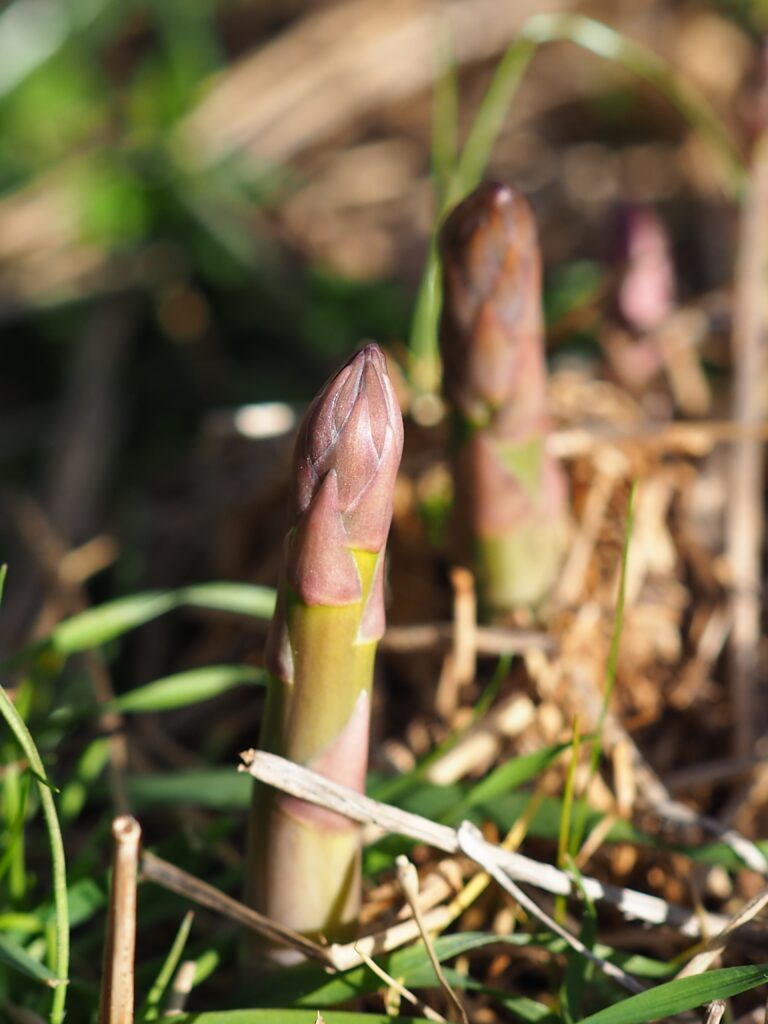
Photo by Rick Whittle on Unsplash
As the gardening season winds down, it’s time to shift our focus from nurturing our asparagus plants to preparing them for a well-deserved winter rest. Proper end-of-season care is essential to ensure a successful asparagus harvest next year and maintain the overall health of your asparagus bed. In this blog post, we’ll walk you through the essential steps you should take to get your asparagus plants ready for the winter and set the stage for a thriving growing season next year.
Consider the Length of Fronds
Before you get ready to trim those overgrown fronds, here’s an alternative to ponder: leaving them long. While pruning can be beneficial for preventing diseases and tidying up your asparagus patch, leaving the fronds intact provides a source of shelter and food for birds and other critters that overwinter. If you have space and don’t mind the wilder look, allowing some fronds to remain can be a generous gesture to support your local wildlife.
Say Goodbye to Weeds and Debris
Weeds can be relentless, and they tend to crash the asparagus party uninvited. These party crashers steal nutrients and water from your precious asparagus, so it’s time to show them the exit. Pull them out by the roots and clear away any dead leaves, spent flowers, or other unwanted clutter to maintain a clean and weed-free bed.
Keep Cozy with Mulch
Imagine your asparagus plants wrapped up in a warm, cozy blanket for the winter. Mulching is like providing that snug cover. It helps regulate soil temperature and retains moisture, which your asparagus will appreciate. Spread a layer of straw, leaves, or wood chips about 2-3 inches deep across the bed to keep them warm and protected.
Check for Unwanted Guests
While you’re spending time with your asparagus, it’s a great opportunity to give them a health checkup. Look for signs of unwelcome visitors like discolored or damaged leaves, suspicious holes, or any unusual growths. If you spot any issues, take action, whether it’s removing affected plant parts or applying the right treatment.
Divide and Transplant for a Fresh Start
If your asparagus bed has seen its fair share of growing seasons, it might be time for a change. Overcrowded plants can lead to reduced yields, so consider dividing and transplanting some of the crowns in the early spring as new shoots emerge. It’s like giving your asparagus a fresh start and room to grow.
Soil Health and Nutrient Boost
To ensure your asparagus bed stays robust, consider conducting a soil test at the end of the season. Asparagus thrives in soil with a slightly acidic to neutral pH (around 6.5-7.0). If your soil needs a pH adjustment, add lime to raise it or sulfur to lower it. Additionally, don’t forget to add some compost or a balanced fertilizer to replenish the soil’s nutrients and set the stage for a successful growing season next year.
Conclusion
Taking care of your asparagus plants at the end of the season is all about ensuring they’re in tip-top shape for the upcoming growing season. Whether you trim the fronds or leave them for local critters, bid weeds farewell, mulch for insulation, check for pests, consider division, or tend to your soil’s needs, you’re giving your asparagus patch the best chance to shine next year. The payoff will be those delicious, tender asparagus spears you love. Happy gardening!




